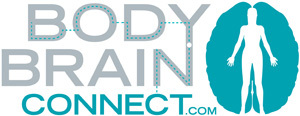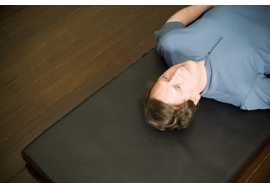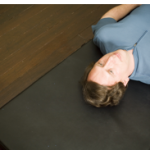What makes movement mindful?
In brief, it’s because you are paying attention to it! There are many types of mindful movement. Here’s a short list:
• Yoga
• Pilates
• Feldenkrais ®
• T’ai chi
• Gyrotonic ®
• Body Mind Centering ®
• Z-Health ®
What sets these movement disciplines apart from others is that you pay attention to your movements. You don’t hunch over and squint while reading a magazine for forty minutes and then jump off the cardio machine; you pay attention to your form, breath or technique. Exercising on elliptical machines can be mindful, if you choose. Instead of paying attention to the lives of the rich and famous by reading the latest tabloid magazine, or scanning the business section, you can focus on your body. You can listen to your breath, count your footsteps or concentrate on the form of your knee or ankle.
There is no specific location for attention in the brain. There are “attention networks.” They are called networks because when they are engaged, multiple areas of the brain—parietal, frontal and temporal lobes– are activated.
Attention is not just one network. There are actually three attention networks.
1. Alerting
2. Orienting
3. Execution
Alerting attention network in mindful movement: How you feel when class begins
The alerting attention network increases and sustains your arousal level. In mindful movement sessions, the alerting network can be triggered at the start of class when your teacher brings you to a balanced arousal level. Are you feeling tired before you begin yoga or is that double shot of espresso just kicking in? Most mindful movement classes begin with some sort of centering practice to bring you to the correct level of alertness: which is a calm and alert state. Starting class with breathing or body scanning techniques, such as the teacher cuing “feel the weight of your body on the floor,” allows your alerting network to focus inwards to the body.
Your alerting network is triggered during surprises—or unexpected changes. Think of the last time you were in Shavasana and someone left class early, slamming the door behind. Immediately you were alerted to the loud sound of the door. Your brain was alerting you: “Is there danger?”
Reaching optimal alertness allows you to become more engaged –to become aware of stimuli that you couldn’t sense before. This enhances memory formation. Think about the last time you were in a Pilates class and you finally figured out a specific body connection. Say, for instance, you felt the connection between pulling your navel to your spine and pulling up your pelvic floor. Pulling your navel to your spine feels like a corset hugging your waist three hundred and sixty degrees. Pulling up your pelvic floor feels like you are stopping the flow of urine. If you engage both of these muscle groups at the same time your pelvis is more stable and your core is stronger. Importantly, without the proper level of alertness, you might not have been aware of these stimuli, and that contracting them together simultaneously adds to your core strength. Most important, during the next class, you remember to pull your navel to your spine and engage your pelvic floor because your triggered alerting network helped form a memory of that discovery.
Part 2 Orienting Attention Networks and Part 3 Execution Attention Networks to follow.
Learn more about attention and mindful movement:
Good, Better, Best: How attention and specific cues can optimize Yoga & Pilates performance
Learn more about brain-based cues:
How to Sort Out if New Brain-based Approaches can Improve Yoga and Pilates






Thanks for sharing. Namaste
Thank you Pete!